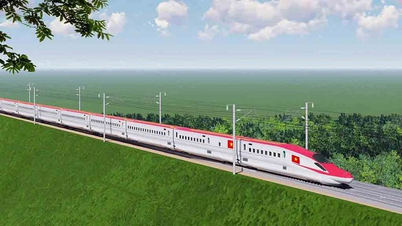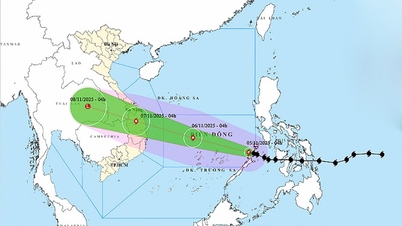There are many weaknesses
Banks are one of the important pillars of the financial system. This system plays a key role in capital circulation, providing financial services to the economy .
From the perspective of banks, businesses are important customers, playing a key role in promoting credit growth, investment, and sustainable economic development.

According to banks, businesses are classified and evaluated based on many factors such as: size, industry, financial situation, and risk level.
These criteria help banks determine the business's ability to repay debts, thereby making decisions on granting credit and other financial support packages.
There are currently about 4,700 enterprises in Dak Nong. Of these, small and even micro-sized enterprises account for 99%. The number of enterprises is distributed fairly evenly across sectors. However, the quality of enterprises is still weak in many aspects.
First of all, in terms of human resources, finance, and application of science and technology in production in enterprises is still low. Many units have unfeasible production and business plans.
In fact, most of the businesses in the area are small and micro enterprises. The qualifications of the staff and management leaders are still limited.
The ability to grasp information, analyze, and forecast is still weak. Developing production and business plans lack feasibility.
According to statistics, currently, the human resources in enterprises in Dak Nong with master's degrees only account for 0.05%. The labor force in enterprises with university degrees accounts for only over 8%, college degrees over 6%, and vocational secondary schools 12%. The rest are ordinary and below ordinary laborers.
Assessing businesses in Dak Nong, Deputy Director of the Joint Stock Commercial Bank for Investment and Development (BIDV) Dak Nong Branch Pham Quoc Viet said that Dak Nong businesses are mainly small and micro.
Credit institutions today find it very difficult to assess the actual financial capacity of customers. Especially the financial reporting system, tax accounting, and business cash flow.

Most businesses have financial reporting systems that do not accurately reflect their business performance. Some fixed assets are invested in by businesses, but are not included in expenses due to lack of accounting.
“The financial reports of Dak Nong enterprises are mostly not audited. Some enterprises regularly report losses when they finalize their taxes,” Mr. Viet affirmed.
Assessing the capacity of businesses, a leader of a local commercial bank said that the internal strength of Dak Nong businesses is still weak.
The real assets of the enterprises are not high. Due to limited human resources and internal strength, most of Dak Nong enterprises are operating in a short-term manner, not really sustainable.
This is also the reason why business development is not sustainable, especially in the current context of economic integration.

Dak Nong enterprises themselves are lacking confidence in the current context. The reason is that the labor force has limited qualifications and skills, the planning of raw material areas is unclear, and the production and business plans are not up to the mark.
“Businesses have difficulty accessing capital, land credit, and start-up procedures are still limited. These are obstacles that reduce the resistance of businesses,” the leader affirmed.
Due to insufficient scale and resources, when faced with market developments, many businesses give up, suffer losses, and are at high risk of bankruptcy.
When liquidity is weak, the business certainly has not built a brand, reputation, or built trust with the bank.
Businesses need to increase value
For banks, businesses are not only customers but also important strategic partners in the financial ecosystem.
The mutual relationship between banks and enterprises plays an important role in promoting sustainable economic growth. Both sides need to build trust, strengthen cooperation and strive to overcome challenges to develop together.

Before deciding to grant credit, banks often consider many factors to assess the risk level and repayment capacity of the business. The main factors include: financial situation, credit history, collateral, business plan.
According to Director of the State Bank of Dak Nong Province Branch Pham Thanh Tinh, no one else but the enterprises themselves must constantly improve their management skills, financial reporting, operations, and labor training.
Enterprises must develop their own effective investment plans and methods, suitable to their financial, technological and human capacity to increase value.
“When businesses can do that, we believe that there is no need for businesses to borrow, but credit institutions will come to them. Because nowadays, competition between banks is getting higher and higher. Banks themselves are proactively looking for reputable and viable customers to speed up capital flow,” Mr. Tinh affirmed.
In fact, in recent times, many businesses in Dak Nong have been expanding themselves by investing in technology and modern machinery for specialized production and value enhancement. However, this number is still limited.

Small, medium and micro enterprises play an important role in the chain of goods circulation. Creating a favorable operating environment for enterprises in general and small enterprises in particular is very necessary. In addition to their own resources, enterprises need credit capital to develop.
To do this, businesses must continuously enhance their value through improving their financial situation, building viable business plans and effectively managing risks.
A business with good financial potential, transparent credit history and clear development strategy will always be a reliable partner of the bank, thereby easily accessing preferential capital sources to serve long-term development.
Source: https://baodaknong.vn/doanh-nghiep-dak-nong-ra-sao-trong-mat-ngan-hang-234945.html


![[Photo] The road connecting Dong Nai with Ho Chi Minh City is still unfinished after 5 years of construction.](https://vphoto.vietnam.vn/thumb/1200x675/vietnam/resource/IMAGE/2025/11/04/1762241675985_ndo_br_dji-20251104104418-0635-d-resize-1295-jpg.webp)

![[Photo] Panorama of the Patriotic Emulation Congress of Nhan Dan Newspaper for the period 2025-2030](https://vphoto.vietnam.vn/thumb/1200x675/vietnam/resource/IMAGE/2025/11/04/1762252775462_ndo_br_dhthiduayeuncbaond-6125-jpg.webp)
![[Photo] Ho Chi Minh City Youth Take Action for a Cleaner Environment](https://vphoto.vietnam.vn/thumb/1200x675/vietnam/resource/IMAGE/2025/11/04/1762233574890_550816358-1108586934787014-6430522970717297480-n-1-jpg.webp)
![[Photo] Ca Mau "struggling" to cope with the highest tide of the year, forecast to exceed alert level 3](https://vphoto.vietnam.vn/thumb/1200x675/vietnam/resource/IMAGE/2025/11/04/1762235371445_ndo_br_trieu-cuong-2-6486-jpg.webp)






























































































Comment (0)